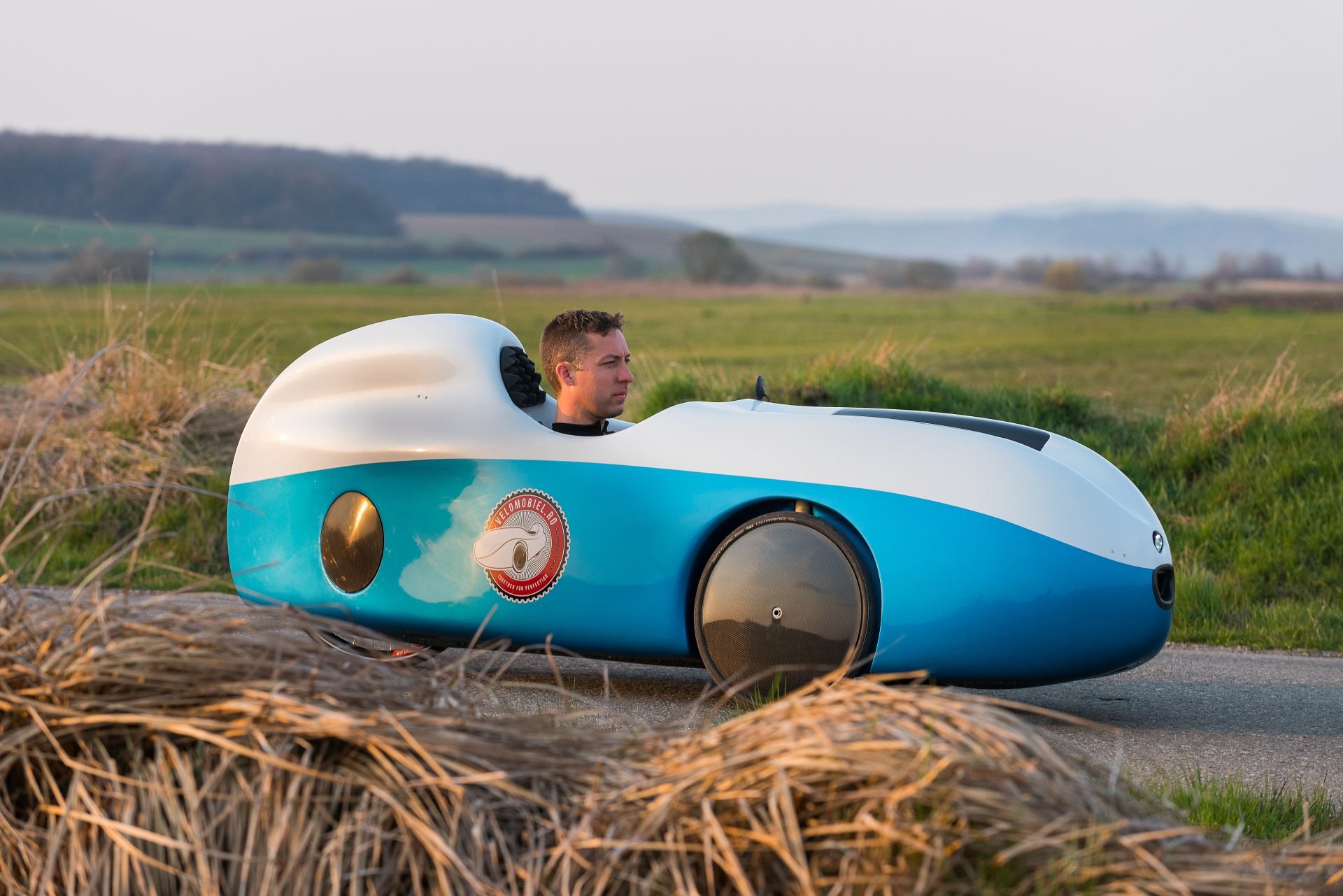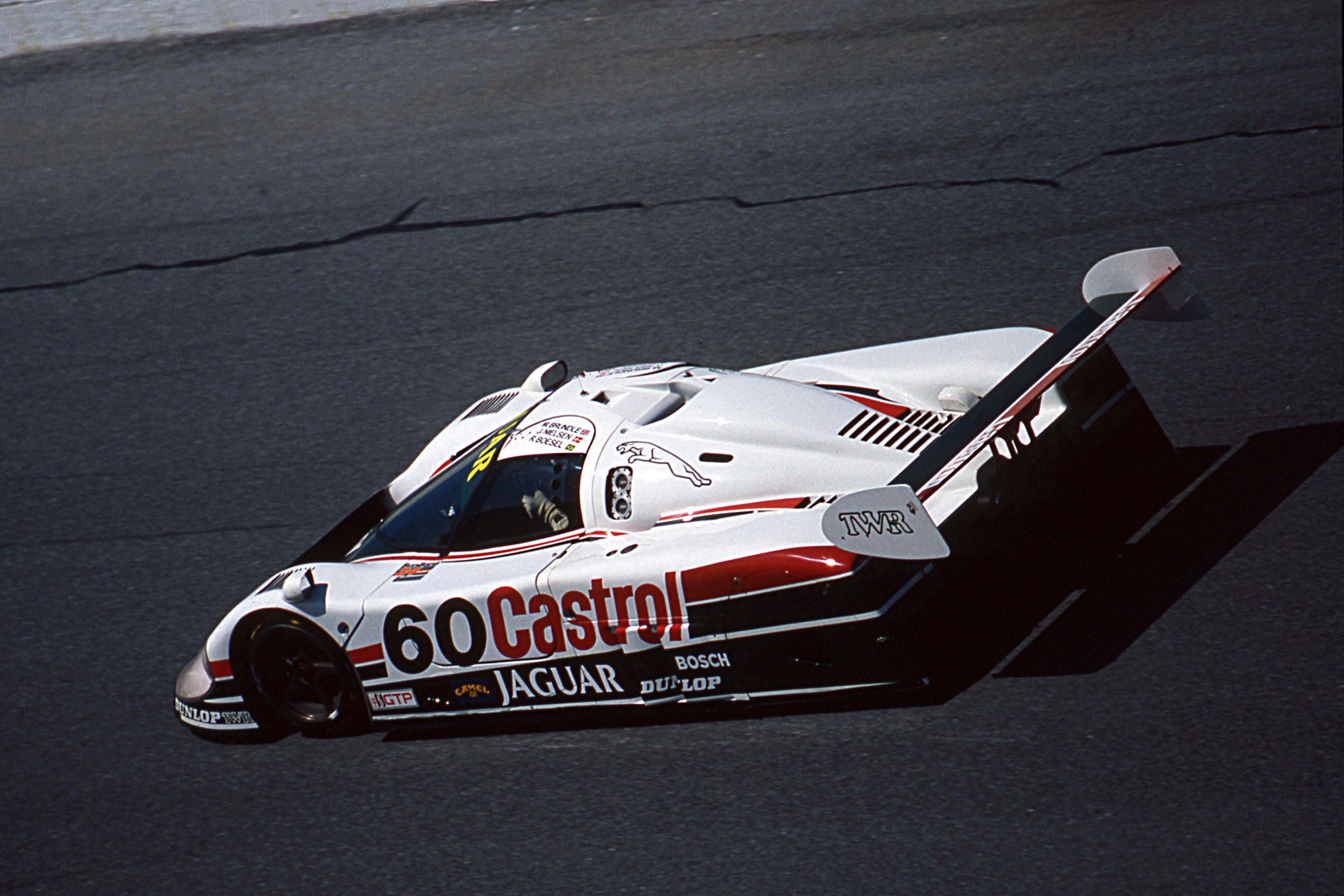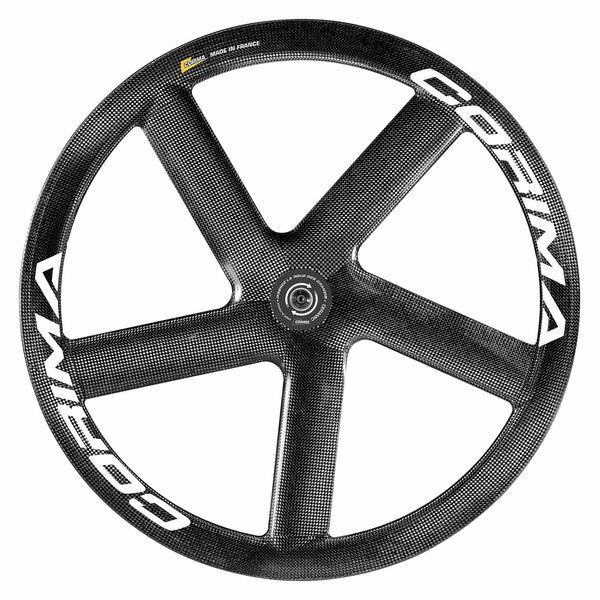Tesla Wheels, Aero wheelset applied to cycling
#1
Pepsi4all
Thread Starter
Join Date: Sep 2011
Location: Long Beach
Posts: 238
Bikes: Old Trek 2100 1993
Mentioned: 0 Post(s)
Tagged: 0 Thread(s)
Quoted: 0 Post(s)
Liked 0 Times
in
0 Posts
Tesla Wheels, Aero wheelset applied to cycling
Is there a possibility someone can mimic the Tesla aero wheels, make it dual side carbon? It is proven to be Aero. What you think?


Likes For Elvo:
#4
Senior Member
Join Date: Nov 2014
Location: Eugene, Oregon, USA
Posts: 27,547
Mentioned: 217 Post(s)
Tagged: 0 Thread(s)
Quoted: 18375 Post(s)
Liked 4,510 Times
in
3,352 Posts

#5
Banned.
Car wheels are not meant to be aero.
The wheel rims are also designed to work like finned heat sink + fan to help cool the brakes. Those things create a lot of drag.
The wheel rims are also designed to work like finned heat sink + fan to help cool the brakes. Those things create a lot of drag.
Likes For qwaalodge:
#6
Senior Member
Join Date: Nov 2014
Location: Eugene, Oregon, USA
Posts: 27,547
Mentioned: 217 Post(s)
Tagged: 0 Thread(s)
Quoted: 18375 Post(s)
Liked 4,510 Times
in
3,352 Posts
Here is a Car and Driver test of Tesla's Model 3 wheel covers.
https://www.caranddriver.com/news/a3...ficiency-test/
Apparently a simple plastic cover over an ordinary aluminum wheel.
They found the plastic covers improved efficiency at highway speeds by about 3.4%. Not huge but it increased the range by about 10 miles which might mean the difference between getting home and calling the tow truck.
Likes For CliffordK:
#7
SE Wis
Join Date: Apr 2005
Location: Milwaukee, WI
Posts: 10,513
Bikes: '68 Raleigh Sprite, '02 Raleigh C500, '84 Raleigh Gran Prix, '91 Trek 400, 2013 Novara Randonee, 1990 Trek 970
Mentioned: 40 Post(s)
Tagged: 0 Thread(s)
Quoted: 2747 Post(s)
Liked 3,394 Times
in
2,056 Posts
Cool until you get a good crosswind
Likes For dedhed:
#8
Senior Member
Join Date: May 2021
Posts: 8,426
Mentioned: 12 Post(s)
Tagged: 0 Thread(s)
Quoted: 4404 Post(s)
Liked 4,856 Times
in
3,004 Posts
A complete flat disc is as aero as you can get. Like on a TT wheel for example. But obviously not good in a crosswind. The Tesla wheel cap is a compromise between styling, aero and brake cooling. Only the aero part is really relevant to a bicycle wheel, but a flat disc is even more aero. Maybe a "Tesla" style disc might be fractionally better in crosswinds. Traditional alloy car wheels are not very aero at all, which is what Tesla have addressed with their trim design. It's quite effective.
#9
Senior Member
Join Date: Mar 2006
Location: Chicago, IL, USA
Posts: 2,880
Mentioned: 3 Post(s)
Tagged: 0 Thread(s)
Quoted: 1461 Post(s)
Liked 1,485 Times
in
870 Posts
It's weird to me that Tesla is credited for this design, when aero wheels and covers have been used on EV's/hybrids for years.
Here's a 2000 Honda Insight:

2012 Hyundai Sonata hybrid:

Even Formula 1 is using aero wheel covers now:

Here's a 2000 Honda Insight:

2012 Hyundai Sonata hybrid:

Even Formula 1 is using aero wheel covers now:

#10
Senior Member
Join Date: Feb 2015
Location: Mission Viejo
Posts: 5,806
Bikes: 1986 Cannondale SR400 (Flat bar commuter), 1988 Cannondale Criterium XTR, 1992 Serotta T-Max, 1995 Trek 970
Mentioned: 20 Post(s)
Tagged: 0 Thread(s)
Quoted: 1944 Post(s)
Liked 2,164 Times
in
1,323 Posts
Yes, cutting edge aero technology.

John

John
Likes For 70sSanO:
#11
Friendship is Magic
Join Date: Nov 2010
Location: Sacramento, CA
Posts: 22,984
Bikes: old ones
Mentioned: 304 Post(s)
Tagged: 0 Thread(s)
Quoted: 26418 Post(s)
Liked 10,380 Times
in
7,208 Posts
.
...I'm waiting for Tesla to start selling a fully autonomous bicycle, with hazard sensing, automatic braking, and autopilot. I'm only along for the ride anyway.
...I'm waiting for Tesla to start selling a fully autonomous bicycle, with hazard sensing, automatic braking, and autopilot. I'm only along for the ride anyway.
__________________
Likes For 3alarmer:
#12
Senior Member
Join Date: May 2021
Posts: 8,426
Mentioned: 12 Post(s)
Tagged: 0 Thread(s)
Quoted: 4404 Post(s)
Liked 4,856 Times
in
3,004 Posts
#13
Senior Member
Join Date: Mar 2006
Location: Chicago, IL, USA
Posts: 2,880
Mentioned: 3 Post(s)
Tagged: 0 Thread(s)
Quoted: 1461 Post(s)
Liked 1,485 Times
in
870 Posts
A complete flat disc is as aero as you can get. Like on a TT wheel for example. But obviously not good in a crosswind. The Tesla wheel cap is a compromise between styling, aero and brake cooling. Only the aero part is really relevant to a bicycle wheel, but a flat disc is even more aero. Maybe a "Tesla" style disc might be fractionally better in crosswinds. Traditional alloy car wheels are not very aero at all, which is what Tesla have addressed with their trim design. It's quite effective.
#14
Senior Member
Join Date: May 2021
Posts: 8,426
Mentioned: 12 Post(s)
Tagged: 0 Thread(s)
Quoted: 4404 Post(s)
Liked 4,856 Times
in
3,004 Posts
I was referencing the first post. It would be weird to reference something else in this thread right?
Inventing something and applying it are not the same thing.
Inventing something and applying it are not the same thing.
Likes For PeteHski:
#15
Senior Member
Join Date: May 2021
Posts: 8,426
Mentioned: 12 Post(s)
Tagged: 0 Thread(s)
Quoted: 4404 Post(s)
Liked 4,856 Times
in
3,004 Posts
Since the Honda was mentioned above, covered rear wheel arches (which Honda didn't invent either) are also more aero than open ones. But the aesthetics don't go down too well with marketing, which is why you rarely see them.
#16
Senior Member
Join Date: Nov 2014
Location: Eugene, Oregon, USA
Posts: 27,547
Mentioned: 217 Post(s)
Tagged: 0 Thread(s)
Quoted: 18375 Post(s)
Liked 4,510 Times
in
3,352 Posts
One thing that I've noticed with many modern cars is that the wheels have been moved to the outside of the fenders. So, it is a smooth transition from car body to wheel and back to car body. Thus, potentially negating the need for the covered wheel arches, while at the same time maximizing the width of the wheels and improving stability.
#17
Newbie racer
Join Date: Feb 2018
Posts: 3,406
Bikes: Propel, red is faster
Mentioned: 34 Post(s)
Tagged: 0 Thread(s)
Quoted: 1575 Post(s)
Liked 1,569 Times
in
974 Posts
*Mostly*: even if the front is mostly to blame and you go shallower up front on windy days....if you're a moron and in a gale run a rear disc instead of a normal aero rim all bets are off.
I ride the 90mm/disc combo in training most every ride. The 60mm only comes out for the front if the wind will cause "ditch or oncoming" traffic situations.
As for the original poster, vehicle aero wheels are intended to both maintain the flow down the side of the car (that has panels) and also to induce an inward flow to brakes or other areas needing cooling. So, it's so apples and oranges that it isn't worth pursuing the thought further. Closest would be balancing how hot a TT helmet or aero road helmet is in summer against how aero you make it.
#18
Senior Member
Join Date: Nov 2014
Location: Eugene, Oregon, USA
Posts: 27,547
Mentioned: 217 Post(s)
Tagged: 0 Thread(s)
Quoted: 18375 Post(s)
Liked 4,510 Times
in
3,352 Posts

#19
Senior Member
Join Date: May 2021
Posts: 8,426
Mentioned: 12 Post(s)
Tagged: 0 Thread(s)
Quoted: 4404 Post(s)
Liked 4,856 Times
in
3,004 Posts
I've wondered about that. Those covered wheel arches have been around for a long time. Certainly since the 1950's.
One thing that I've noticed with many modern cars is that the wheels have been moved to the outside of the fenders. So, it is a smooth transition from car body to wheel and back to car body. Thus, potentially negating the need for the covered wheel arches, while at the same time maximizing the width of the wheels and improving stability.
One thing that I've noticed with many modern cars is that the wheels have been moved to the outside of the fenders. So, it is a smooth transition from car body to wheel and back to car body. Thus, potentially negating the need for the covered wheel arches, while at the same time maximizing the width of the wheels and improving stability.


Last edited by PeteHski; 02-22-22 at 03:13 PM.
#20
-------
Join Date: Jul 2020
Location: Tejas
Posts: 12,795
Mentioned: 2 Post(s)
Tagged: 0 Thread(s)
Quoted: 9653 Post(s)
Liked 6,365 Times
in
3,505 Posts
Porsche has developed "aero" wheels for its electric Taycan. But, they don't work like a bike wheel would have to work since they are essentially only aero on the outside. There are also other features that help the aerodynamics of the cars in the area of the wheels:
Another feature is the aerodynamic rims. To limit their drag, Porsche created a rim that is more “covered” than a regular rim. Second, the profile of the spokes has been designed in such a way that the air nicely slides across the spokes, instead of being pushed away by more blunt spoke shapes.
Finally, Porsche also air deflectors in front of the wheels: these are small “ramps” that divert the air so it doesn’t hit the wheels directly (where it would create a large wake). These are present both at the front and rear wheels.
Tech: Porsche Taycan Aerodynamics Explained | Clean Fleet Report
Another feature is the aerodynamic rims. To limit their drag, Porsche created a rim that is more “covered” than a regular rim. Second, the profile of the spokes has been designed in such a way that the air nicely slides across the spokes, instead of being pushed away by more blunt spoke shapes.
Finally, Porsche also air deflectors in front of the wheels: these are small “ramps” that divert the air so it doesn’t hit the wheels directly (where it would create a large wake). These are present both at the front and rear wheels.
Tech: Porsche Taycan Aerodynamics Explained | Clean Fleet Report
#21
-------
Join Date: Jul 2020
Location: Tejas
Posts: 12,795
Mentioned: 2 Post(s)
Tagged: 0 Thread(s)
Quoted: 9653 Post(s)
Liked 6,365 Times
in
3,505 Posts
Most EVs use regenerative braking except in extreme circumstances. On the Taycan, the brake pads don't even touch the discs except in emergency braking for the most part. In normal driving, the electric motors typically drive and stop the cars. The brakes rarely get hot.
#22
Senior Member
Join Date: May 2021
Posts: 8,426
Mentioned: 12 Post(s)
Tagged: 0 Thread(s)
Quoted: 4404 Post(s)
Liked 4,856 Times
in
3,004 Posts
ICE cars perhaps. EVs, not so much.
Most EVs use regenerative braking except in extreme circumstances. On the Taycan, the brake pads don't even touch the discs except in emergency braking for the most part. In normal driving, the electric motors typically drive and stop the cars. The brakes rarely get hot.
Most EVs use regenerative braking except in extreme circumstances. On the Taycan, the brake pads don't even touch the discs except in emergency braking for the most part. In normal driving, the electric motors typically drive and stop the cars. The brakes rarely get hot.
#23
-------
Join Date: Jul 2020
Location: Tejas
Posts: 12,795
Mentioned: 2 Post(s)
Tagged: 0 Thread(s)
Quoted: 9653 Post(s)
Liked 6,365 Times
in
3,505 Posts
From: Why Porsche Gave the Taycan Enormous Brakes (roadandtrack.com):
Porsche engineers assume that drivers of the new Taycan electric sedan will accomplish around 90 percent of their braking via regen.
Rather than change its braking performance standards for the Taycan, Porsche solved the problem by fitting those enormous brake rotors and ten-piston calipers. It seems a little funny given that, in normal daily driving, those giant brakes might almost never be activated, thanks to the car's regen capabilities.
From:We Evaluate Porsche Taycan's Unique Regenerative Braking System (insideevs.com)
Porsche wanted to do two things when they were designing the Taycan's regenerative braking system.
First, they wanted to recuperate as much energy as possible, and they believe they achieved that goal. Porsche engineers have said that as much as 90% of the Taycan's braking will, on average, be achieved through regenerative braking. The Taycan is capable of generating up to 265 kW into the battery pack.
That's accomplished by adding the front motor's 175 kW regeneration capability, and the 90 kW recuperated by the rear motor. To put the Taycan's 265 kW regenerative braking potential into perspective, the Tesla Model 3 can generate a maximum of 77 kW, less than 1/3 of what the Taycan is capable of pumping back into the battery.
I'll limit my comments to the car that I drive daily. So, not an exaggeration as far as the Taycan is concerned.
Porsche engineers assume that drivers of the new Taycan electric sedan will accomplish around 90 percent of their braking via regen.
Rather than change its braking performance standards for the Taycan, Porsche solved the problem by fitting those enormous brake rotors and ten-piston calipers. It seems a little funny given that, in normal daily driving, those giant brakes might almost never be activated, thanks to the car's regen capabilities.
From:We Evaluate Porsche Taycan's Unique Regenerative Braking System (insideevs.com)
Porsche wanted to do two things when they were designing the Taycan's regenerative braking system.
First, they wanted to recuperate as much energy as possible, and they believe they achieved that goal. Porsche engineers have said that as much as 90% of the Taycan's braking will, on average, be achieved through regenerative braking. The Taycan is capable of generating up to 265 kW into the battery pack.
That's accomplished by adding the front motor's 175 kW regeneration capability, and the 90 kW recuperated by the rear motor. To put the Taycan's 265 kW regenerative braking potential into perspective, the Tesla Model 3 can generate a maximum of 77 kW, less than 1/3 of what the Taycan is capable of pumping back into the battery.
I'll limit my comments to the car that I drive daily. So, not an exaggeration as far as the Taycan is concerned.
#24
Senior Member
Join Date: May 2021
Posts: 8,426
Mentioned: 12 Post(s)
Tagged: 0 Thread(s)
Quoted: 4404 Post(s)
Liked 4,856 Times
in
3,004 Posts
From: Why Porsche Gave the Taycan Enormous Brakes (roadandtrack.com):
Porsche engineers assume that drivers of the new Taycan electric sedan will accomplish around 90 percent of their braking via regen.
Rather than change its braking performance standards for the Taycan, Porsche solved the problem by fitting those enormous brake rotors and ten-piston calipers. It seems a little funny given that, in normal daily driving, those giant brakes might almost never be activated, thanks to the car's regen capabilities.
From:We Evaluate Porsche Taycan's Unique Regenerative Braking System (insideevs.com)
Porsche wanted to do two things when they were designing the Taycan's regenerative braking system.
First, they wanted to recuperate as much energy as possible, and they believe they achieved that goal. Porsche engineers have said that as much as 90% of the Taycan's braking will, on average, be achieved through regenerative braking. The Taycan is capable of generating up to 265 kW into the battery pack.
That's accomplished by adding the front motor's 175 kW regeneration capability, and the 90 kW recuperated by the rear motor. To put the Taycan's 265 kW regenerative braking potential into perspective, the Tesla Model 3 can generate a maximum of 77 kW, less than 1/3 of what the Taycan is capable of pumping back into the battery.
I'll limit my comments to the car that I drive daily. So, not an exaggeration as far as the Taycan is concerned.
Porsche engineers assume that drivers of the new Taycan electric sedan will accomplish around 90 percent of their braking via regen.
Rather than change its braking performance standards for the Taycan, Porsche solved the problem by fitting those enormous brake rotors and ten-piston calipers. It seems a little funny given that, in normal daily driving, those giant brakes might almost never be activated, thanks to the car's regen capabilities.
From:We Evaluate Porsche Taycan's Unique Regenerative Braking System (insideevs.com)
Porsche wanted to do two things when they were designing the Taycan's regenerative braking system.
First, they wanted to recuperate as much energy as possible, and they believe they achieved that goal. Porsche engineers have said that as much as 90% of the Taycan's braking will, on average, be achieved through regenerative braking. The Taycan is capable of generating up to 265 kW into the battery pack.
That's accomplished by adding the front motor's 175 kW regeneration capability, and the 90 kW recuperated by the rear motor. To put the Taycan's 265 kW regenerative braking potential into perspective, the Tesla Model 3 can generate a maximum of 77 kW, less than 1/3 of what the Taycan is capable of pumping back into the battery.
I'll limit my comments to the car that I drive daily. So, not an exaggeration as far as the Taycan is concerned.
#25
Senior Member
Join Date: Feb 2015
Location: Mission Viejo
Posts: 5,806
Bikes: 1986 Cannondale SR400 (Flat bar commuter), 1988 Cannondale Criterium XTR, 1992 Serotta T-Max, 1995 Trek 970
Mentioned: 20 Post(s)
Tagged: 0 Thread(s)
Quoted: 1944 Post(s)
Liked 2,164 Times
in
1,323 Posts
You would think that they could have incorporated something like this...

John

John





